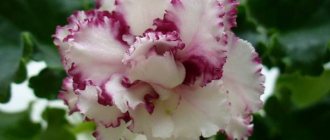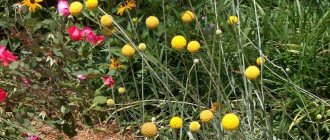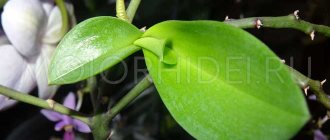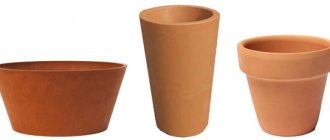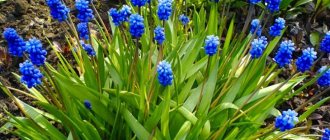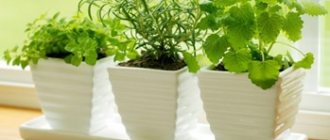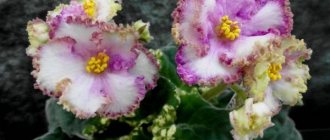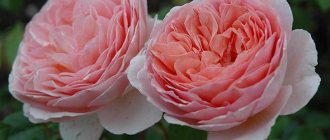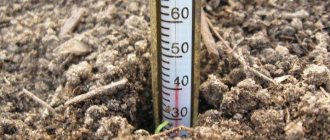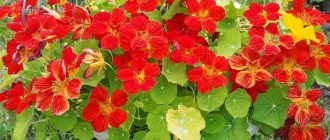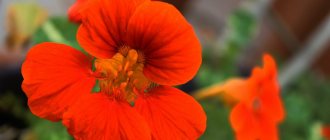Among flowering perennial and annual plants, delphinium has firmly taken an honorable place.
Its long, bright flowering cannot be ignored, and easy care of the plant does not cause difficulties even for inexperienced gardeners.
One thing: when working with a flower, you need to be careful, because delphinium is very poisonous.
Description of the plant
Larkspur, spur, delphinium (Delphinium) - all these are names of one plant. The herbaceous flower can be either perennial or annual.
Delphinium belongs to the Buttercup family and has about 450 species . Annuals are classified into a related genus called Sokirki (Consolida), which includes about 40 species.
The natural range of the spur is extensive; it can be found throughout the northern hemisphere on the edges of forests, clearings, along the banks of streams and rivers. Many varieties of larkspur are native to Southeast Asia.
Attention! Delphinium is closely related to the poisonous Aconite family and, like them, is poisonous.
The height of the plant ranges from 0.8 to 1.2 m, but the low-growing alpine delphinium does not grow higher than 10 cm.
The stem of delphinium is oriented strictly upward, rigid, unbranched. Depending on the variety, it may have pubescence or be smooth.
The leaf plates of the plant are palmate-pinnate, planted on thick petioles opposite each other in such a way that they form a kind of rosette. The edge of the leaf has pronounced serrations. The root system of the spur is developed, the root itself is thick and fibrous.
During flowering, the delphinium opens many buds , forming a long (sometimes up to 1 meter) flower cluster.
There is an opinion that when closed, the buds of the spur are similar to the head of a dolphin, which served as the basis for the name. According to the second version, the flower was named after the Greek city of Delphi, where it grew in huge quantities.
its second name - “spur” - due to the long transverse process on the sepals, which resembles a spur.
The color of the buds is strikingly diverse. Main shades:
- white;
- blue;
- blue;
- pink;
- yellow;
- violet.
The corollas are found in both rich and pastel colors, and the hybrid delphinium can have a two-color color.
Flowering begins in June-July and lasts until the end of September . Cultural delphinium - honey plant; has simple, semi-double or double flowers. They attract a large number of butterflies and bumblebees to the site.
Name
Presumably Delphinium received its botanical name due to the similarity of the unopened flower to the shape of the head and body of a dolphin.
However, romantic people prefer the legend of a talented young man from Ancient Hellas, who sculpted a sculpture of his dead lover from stone and breathed life into it. The gods considered this to be insolence and punished him by turning him into a dolphin. Once a girl came to the seashore and saw a dolphin in the waves; he swam up to her and presented her with a blue delphinium flower.
The second name of the flower is more popular - Larkspur, literally “living bone” - it was born due to the medicinal properties of the plant, which helps with the healing of wounds and fractures (in the form of lotions).
Also, sometimes the plant is called the old-fashioned Spurnik - the name is derived from the shape of the outgrowth-appendage on the upper sepal, which looks like a cavalry spur.
Types and varieties with photos
In the wild in Russia, two species of spurs are found, but many hybrid varieties of the plant are grown in gardens.
Garden
Perhaps, plants of this particular hybrid group are most often found in gardens and summer cottages . Most of the plants fall under the description:
- slender, vertically oriented flower with a height of about 2 m;
- flowering begins in June and lasts until September;
- very rarely double flowers, often with simple petals;
- the corollas are collected in spectacular cluster inflorescences, whose length can approach 100 cm.
Among garden delphinium hybrids there are several groups:
- elatums, or Foster group;
- Marfinsky hybrids (Malyutinsky varieties);
- pacific, or Pacific hybrids;
- belladonna;
- Delphinium Scottish, or Highlander.
High
This spur is found in the wild and has become the basis of many hybrids. The height of the plant usually stops within one and a half meters, less often it approaches the two-meter mark.
5–7 strongly dissected leaf plates are formed on the stem, and the inflorescence is a brush of ordinary non-double flowers of an azure or violet tone. Flowering, starting in mid-summer, will last until the end.
Tatransky
A relict plant, but at the same time it crosses well with a tall variety of delphinium, forming attractive hybrids.
The stem height is from 0.5 to 1 m, flowering occurs in July. The color of the petals has shades of azure and purple.
Large-flowered
Under natural conditions, plants of this group can be found in China and Russia, which is why they are called Chinese or Siberian spurs.
The maximum height of the shoot is about 100 cm, but most often the common-flowered delphinium does not exceed 0.5 m.
Magnificent large flowers of white, purple or light blue appear on the plant in June and bloom for about a month.
Sometimes a second flowering occurs in September. The buds do not form a pronounced inflorescence; they are located randomly on the stem.
Bruno or Brunona
This dwarf variety of larkspur rarely reaches 0.4 m in height. The perennial flowers are notable for their smooth transition from purple to blue.
Flowering occurs in the first months of summer, but delphinium bruno is able to bloom for the second time in September.
Interesting! When flowering, the plant emits a distinct musky aroma, for which it is popularly known as musk spur.
Holostalked
A dwarf species, whose height is in the range of 0.3–0.6 m. Under natural conditions, it is found in America.
The flowers of the holostem spur bear little resemblance to the flowers of other species; they differ in their more elongated tubular shape and the reddish-orange color of the petals. Flowering, starting in June, will last until the very beginning of autumn.
Delphinium ajax, or garden sokiriki
Plants of this species are annual hybrids of dubious and oriental spurs. The height of the shoots varies depending on the characteristics of a particular variety, ranging from 0.3–1 m in height.
Flowers can be either simple or densely double. The color of the petals is white, blue, pink, red or blue.
Delphinium field
Widely distributed in nature, it has served as the basis for many varieties and hybrids. The slender vertical stem of the field delphinium can reach a height of 2 meters.
The upper part of the stem is densely covered with single or double flowers, whose petals are colored white, pink, lilac, blue or violet.
The flowering period covers almost the entire summer and often extends to the beginning of autumn. It has been grown as a cultivated flower since 1572.
Versatile application in landscape design
Delphinium is universal in use - suitable for gardens of various types:
- rural,
- eastern,
- naturalistic,
- forest.
Garden larkspur hybrids are an excellent proposition for rural, English and eclectic gardens.
Tall varieties of larkspur are planted near fences, walls, and small architectural objects. From a few to a dozen are planted on ridges, planting them in the background as a backdrop for low-growing species.
Low varieties are suitable for random planting in various parts of a flower bed or edging. You can grow them in containers as decoration for balconies, terraces, and porches.
Delphiniums of different types go well with each other and with many perennials:
- peonies,
- geranium,
- lupins,
- decorative garlic,
- yarrow,
- echinacea,
- helenium,
- sunflowers,
- daylilies,
- chrysanthemums.
Varieties with cornflower blue flowers look beautiful in the company of red poppies, yellow daylilies, pink foxgloves, and white daisies. Varieties with white flowers should be planted next to yellow rudbeckia, pink echinacea, scarlet lobelia and delicate ornamental grasses. Delphinium can be used to create a one-color flower, for example, with only white or blue flowers. Classic combinations with roses look attractive.
Spurs look great alone, in large groups, against the background of a lawn, house walls, or fences. You can create stripes along sidewalks and paths.
Large, rigid flowers are suitable for cutting and remain fresh in a vase for a long time. Delphinium cultorum is used for vases. Flowers should be cut when the inflorescences are half developed. Then they stand in the vase for 3-6 days.
Although delphinium flowers are gorgeous and very showy, they will not stay in the flowerbed for very long, so they should be planted among plants that will cover the empty spaces left by the magnificent spur flowers with flowers or leaves.
Growing from seeds
Typically, plants are planted in the ground in the second half of May . However, in order for the delphinium to take root normally and enter the flowering season, it is appropriate to sow seeds for seedlings.
The timing of sowing seedlings is at the end of February - beginning of March .
Preparing seeds for planting
To improve seed germination, they must be pre-treated.
The seed disinfection phase should not be skipped. This will help prevent the development of fungal infections on adult delphiniums.
If seeds are purchased for planting in a store, then manufacturers indicate on the packaging whether the seeds have been disinfected or not.
In this case, if the manufacturer takes care of disinfecting the seed, then the seeds are simply soaked for a day in warm water with the addition of a growth stimulant .
Delphinium seeds collected from plants in the garden or bought from hand must be disinfected before soaking .
A fungicide solution is suitable for this (the dosage should be taken from the instructions for the product) or a dark pink solution of potassium permanganate. Just soak the seeds for 10–15 minutes, then rinse in running water.
Stratification and sowing of seeds
Stratification improves seed germination . For these purposes, a container with seeds can be buried in the snow, but the air temperature should not fall below -5 ° C.
It will be much safer to carry out the procedure in a household refrigerator. A couple of weeks before the planned planting in seedling containers, delphinium seeds are placed on a damp cloth and placed in a bag. The bag is stored on the vegetable shelf.
Caring for seedlings: how to grow correctly
Prepared seeds are sown in containers filled with nutritious loose substrate. You can take a universal soil and add sand to it , or make a soil mixture for delphinium yourself.
For this you will need:
- 2 parts leaf soil;
- 2 parts peat;
- 2 parts humus;
- 1 part coarse sand;
- 0.5 cups perlite.
Attention! A self-composed mixture must be poured with a strong solution of potassium permanganate or heated in the oven for disinfection.
The seeds are distributed over the surface of the soil and sprinkled with a small amount of substrate. Water with a spray bottle and cover with glass.
The glass is removed daily for a short time to ventilate and moisten the soil (as needed).
It is recommended to place the container with the crops on a well-lit windowsill, but cover it with dark cloth or film .
The sun's rays will help create the necessary greenhouse effect, and darkening will stimulate faster emergence of seedlings.
After the delphinium seedlings have appeared, the shelter is removed and the container is moved away from direct sunlight.
When 2–3 true leaves appear on the seedlings, the seedlings need to be planted into individual pots with a volume of at least 200 ml. Try to choose containers with a removable bottom or peat pots so as not to damage the roots when planting in the ground.
Larkspur
Popularly, field larkspur is also called horned cornflowers. Under natural conditions it is found in the European part of the former USSR, in Kazakhstan and Western Siberia. It grows as a weed in crops, near roads and in fallow areas.
An annual plant 20-60 cm in height, glabrous, thin stems, splayed and branched. Leaves are twice or thrice dissected into narrow linear lobes. The root is taproot, long. The flowers are bright, blue-violet (sometimes white, blue or pink).
Larkspur (Consolida regalis)
Blooms from May to September. Propagated by sowing seeds, which germinate in 5-20 days. Seeds remain viable for up to three years. Seeds are sown in open ground, preferably in the fall, but also in the spring.
Used as an ornamental plant to create flowerbeds, flower beds and cut flowers.
Planting and care in open ground
Planting a delphinium in a permanent place does not present any particular difficulties, but the choice of location and further care have a number of nuances .
How and when to plant a plant
Planting in the ground is carried out only after the threat of return frosts has completely passed , i.e. in the second half of May. To plant delphinium, the flower bed is prepared in advance:
- the ground needs to be dug up;
- loosen;
- remove weed roots;
- prepare the holes.
The distance between the holes is at least 0.5 m . The depth of the planting pit is about 0.4 m with the same diameter.
Soil for a flower
The soil in the flowerbed should be loose and nutritious. In many ways, this is why such volumes are laid for the planting hole, because it is almost completely filled with a ready-made substrate from a mixture of garden soil, humus, 30 g of complex fertilizer and 200 ml of wood ash .
The substrate is thoroughly mixed and poured into the hole. A depression is made in the loose soil, and a spur seedling is planted in it.
For the first time, it is recommended to cover the delphinium seedlings with a cut plastic bottle or glass jar. Such a mini-greenhouse will facilitate the process of rooting and adaptation.
Landing site requirements
In many ways, the success of growing spurs in the garden depends on the right location. Given the size of an adult plant, it will need protection from sudden gusts of wind or good support .
In addition, the site should not be located in a low area where moisture can accumulate - this will lead to the development of root rot or fungal infections.
Another requirement of the delphinium is the absence of direct sunlight in the afternoon . The fact is that excess ultraviolet radiation will lead to fading of the bright colors of the petals.
But it’s also not worth pushing the spur into the shade completely. It is optimal to plant the flower in such a way that the sun's rays illuminate the plant in the morning or at sunset.
Which neighbors to choose for delphinium
Delphinium has certain requirements for the planting site; accordingly, representatives of the flora whose preferences are close to these conditions .
Good neighbors for delphinium will be:
- lupine;
- mallow;
- day-lily;
- rudbeckia;
- phlox.
How to replant delphinium
Perennial specimens need to be moved to a new location from time to time . Transplantation is carried out in spring to mid-May or in autumn (September - early October).
If the delphinium is sick, then the transplant is carried out at any time, since this is a forced measure, aimed at saving the flower.
Watering and fertilizing
The spur is not too demanding when it comes to watering, but on average it should receive about 60 liters of water during the growing season .
If the summer is dry, at least 10 liters of water are poured under each bush twice a week. If there is frequent precipitation, the amount of watering is reduced.
The delphinium is fertilized about a month after planting with organic matter . To do this, prepare an infusion of 100 liters of water and a bucket of cow dung - this amount is enough for 5 plants.
By the time the inflorescences form, potassium-phosphorus complexes are added according to the instructions.
Trimming
Delphinium pruning is carried out when the bushes grow to a height of 0.3 m . You need to leave only 5–7 of the strongest shoots, cut the rest close to the ground level.
Care after flowering, preparation for winter
To prepare for winter, it is important to properly prepare the delphinium when the inflorescences have faded. The stems are cut to a height of 0.3 m.
The stem of the spur is hollow, therefore, in order to prevent moisture from getting inside and rotting the stem, the cut site must be coated with clay.
To protect the stems from temperature fluctuations, you can cover them with spruce branches or straw . Otherwise, the delphinium does not require special shelter, since it tolerates frost well.
Caring for delphinium in the second year
The spur grass is actively growing after wintering. It requires a sufficient amount of moisture, and for the development of healthy shoots, you need to cut off new shoots, leaving only 3-5 of the strongest ones .
To make the delphinium grow faster, it is fed with nitrogen-containing fertilizers.
Delphinium propagation
We have already talked about growing from seeds. In addition, delphinium can be propagated by division and cuttings.
When dividing the bush in mid-April. You need to cut off the shoots with a very sharp tool so as not to damage them. They are planted in holes 40*40 cm at a distance of half a meter from each other.
Before planting, add compost (1-2 buckets), superphosphate, potash fertilizers (1 tablespoon each), and wood ash (1 cup) to the hole. The root collar is buried 2-3 cm.
Cuttings are carried out from young plants - shoots of 5-8 cm are taken, cut off at the very rhizome, and treated with Kornevin.
Before rooting, cuttings should be kept warm, providing partial shade and ventilation. After 2 weeks, complex feeding is carried out, and by the end of summer the cuttings take root perfectly.
Perennial delphinium flowers are often used in landscape designs - they bloom when irises and peonies have bloomed, and attract attention with lush multi-colored caps.
They are not capricious to their neighbors, so they are planted together with other flowers - daisies, astilbe, creating multi-colored compositions in parks and gardens.
Pest and disease control
Spurs suffer from powdery mildew . Treatment with a fungicide will help cope.
Black spot can be defeated only at the very beginning of the development of the disease; if most of the bush is affected, it will not be possible to save the flower.
Among the pests that pose a danger to delphinium are:
- aphid;
- delphinium fly;
- slugs
Insecticide treatments will help destroy aphids and flies, but slugs can be lured into special traps.
Wintering
In order for the plant to successfully overwinter and enjoy beautiful flowering next year, it must be prepared for winter. Young crops and those planted in the fall especially need this. Because they haven't taken root yet.
But plants over the age of 2 years can easily withstand frosts down to -25 degrees cold, and under snow even down to -50 degrees below zero.
The worst thing for delphinium is thaws. At the end of autumn, during the period when the first frosts begin, cut off the stems and leave a distance of up to 40 cm from the soil.
You cannot cut it too low, because if too much moisture gets in, the plant can quickly rot. Lubricate the cut with clay to prevent moisture from entering the hollow stem.
Then cover it with a layer of fallen leaves.
